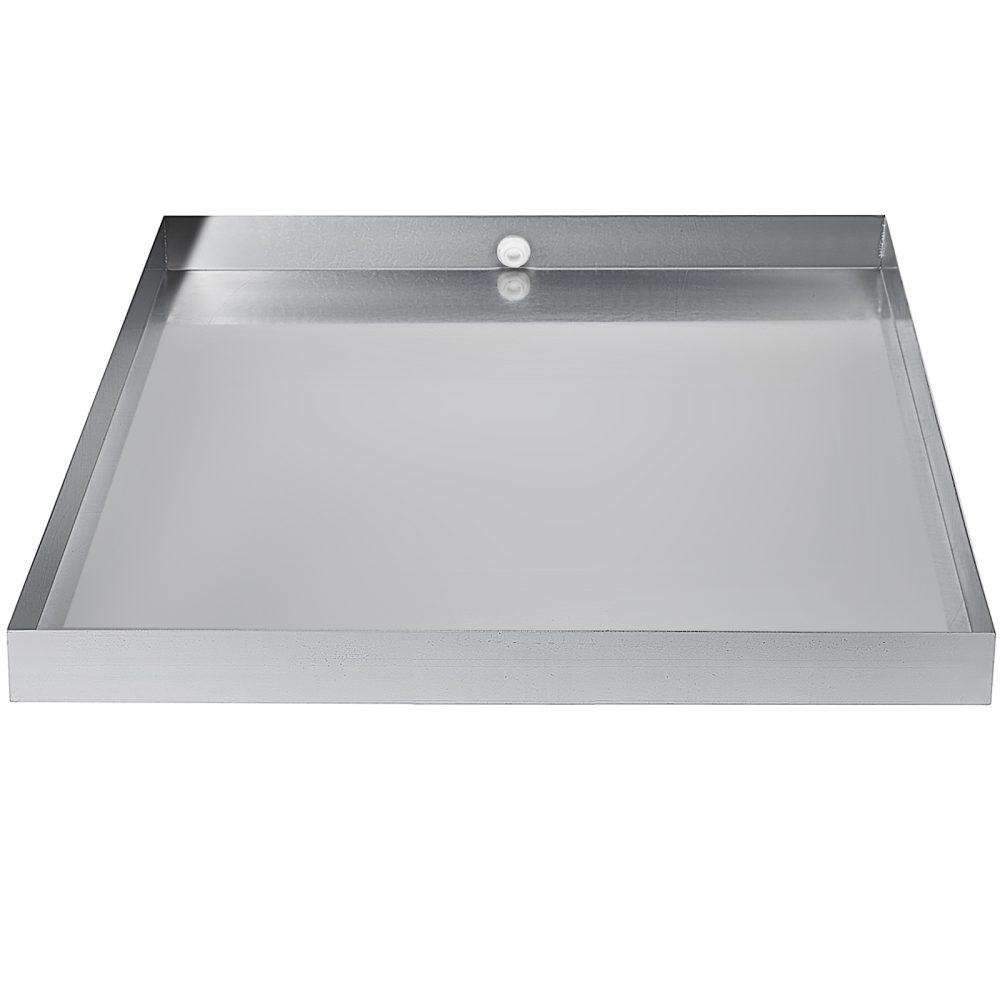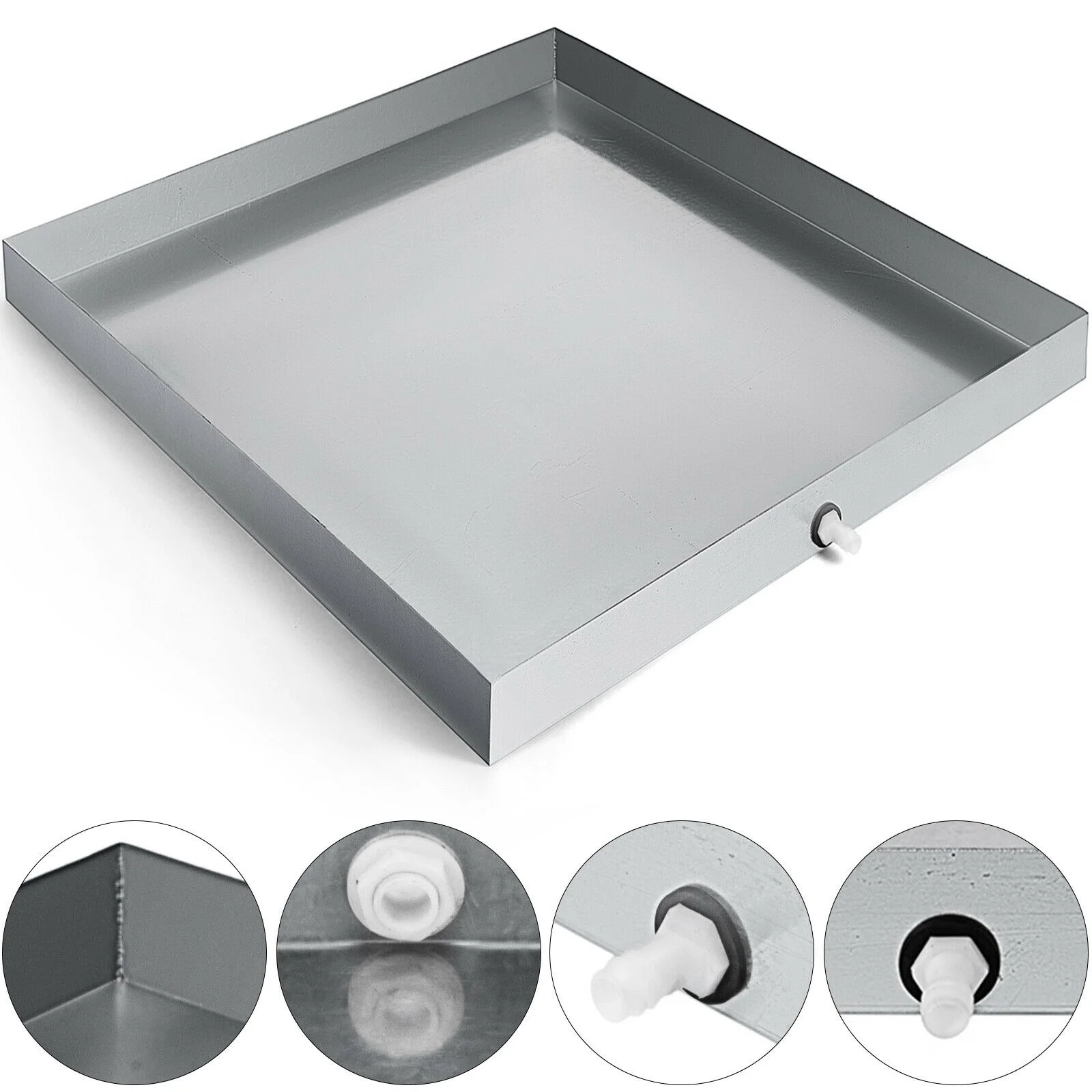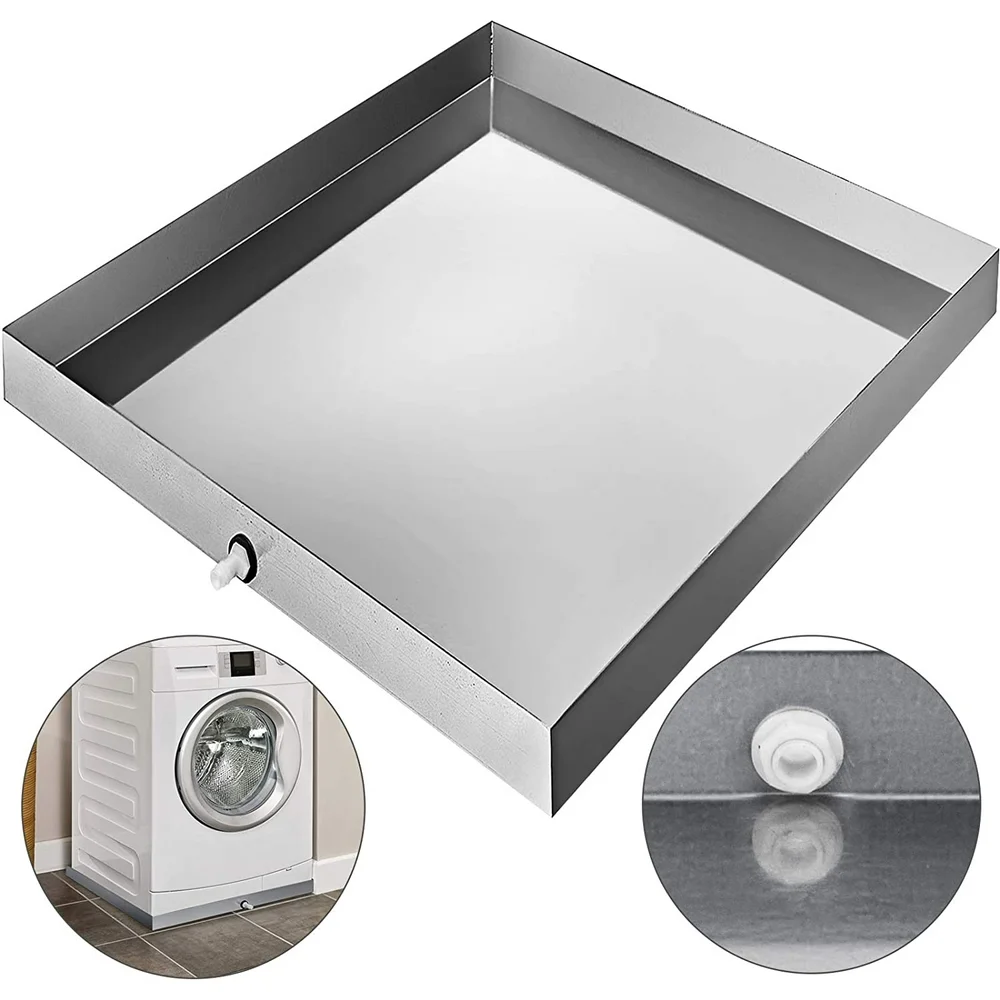A washing machine drip pan may seem like a minor accessory, but its role in protecting your home and appliance health is significant. Often overlooked, a drip pan can be the first line of defense against spills, leaks, and moisture accumulation. This article will explore the purpose, benefits, installation, and maintenance of washing machine drip pans while providing insights into common issues related to washing machines that they can help mitigate.
What is a Washing Machine Drip Pan?
A washing machine drip pan is a specialized tray designed to catch water and other fluids that may leak from the washing machine. Typically made from durable, corrosion-resistant materials such as plastic or metal, these pans are placed beneath the washing machine to capture drips, overflow, and leaks. Some models even come with built-in drain holes or connections for easy disposal of trapped water.
The Purpose of a Drip Pan
The primary purpose of a washing machine drip pan is to prevent water damage. Washing machines are known to produce a fair amount of moisture due to their operation, and improper installation or maintenance can lead to leaks. By catching excess water, the drip pan protects your flooring and surrounding areas from water damage, mold growth, and other potential issues.
Benefits of Using a Washing Machine Drip Pan
Investing in a washing machine drip pan comes with several benefits that extend beyond mere water catchment. Understanding these advantages can help you appreciate the value of this component in your laundry room.
1. Prevents Water Damage
The most obvious benefit is the prevention of water damage. Wooden flooring or carpet can be severely affected by even the smallest leaks. Moreover, water pooling can lead to mold growth, which poses health risks along with potential structural problems in your home.
2. Reduces Need for Repairs
Because a drip pan minimizes water leakage onto the floor, it can significantly reduce the likelihood of requiring repairs for water damage. This can save both time and money in the long run, making it a worthwhile investment.
3. Eases Cleanup
In the event of a leak, having a drip pan in place simplifies the cleanup process. Instead of soaking into the flooring or creating puddles throughout your laundry room, any leaked water can be easily contained within the pan and managed more quickly.
4. Safety Feature
Water and electricity are a dangerous combination. A washing machine drip pan serves as a safety measure, helping reduce the risk of electrical hazards associated with wet environments. This is particularly relevant for homes with small children or pets at risk from slippery surfaces.
5. Prolongs Appliance Lifespan
Excess moisture can cause wear and tear on your washing machine. By capturing leaks, a drip pan helps keep the machine dry, ultimately prolonging its lifespan and reducing maintenance costs associated with repairs.
6. Versatility
Drip pans can also be used in various settings beyond residential laundry rooms. They can be employed in commercial settings or for other appliances that may leak, making them a versatile and practical solution in many situations.
How to Choose the Right Drip Pan for Your Washing Machine
When it comes to selecting a washing machine drip pan, several factors must be considered. Your choice will ultimately depend on your specific washing machine model, space constraints, and personal preferences.
1. Size and Dimensions
The first thing to consider is the size. Measure the dimensions of your washing machine and the space available in your laundry room. A pan that is too small will not serve its purpose effectively, while one that is too large may take up unnecessary floor space.
2. Material
As mentioned earlier, washing machine drip pans are typically made from either plastic or metal. Plastic pans are generally more affordable and lightweight; however, they may not be as durable or heat-resistant as their metal counterparts. On the other hand, metal pans, although more expensive, can provide a longer lifespan and are usually better at handling high temperatures.
3. Presence of Drainage Features
Some washing machine drip pans come equipped with drainage features, like drain holes or tubing that connects to a floor drain. This can make the cleanup process much more manageable, as it allows for the automatic removal of trapped water without needing to lift the pan.
4. Maintenance Requirements
Consider the maintenance requirements of the drip pan as well. Some materials might require additional care, such as occasional cleaning or checking for rust. If you live in a region with high humidity, you may want to invest in a more durable option to reduce maintenance needs over time.
Installing Your Washing Machine Drip Pan
Installing a washing machine drip pan is a relatively straightforward process that can be accomplished with basic tools. Proper installation is crucial for ensuring the pan performs its intended function effectively.
Step 1: Prepare the Area
Before you begin, it’s crucial to prepare the area where the washing machine and the drip pan will be placed. Start by turning off the water supply to the washing machine and unplugging it from the outlet. Move the machine away from the wall, giving you ample space to work.
Step 2: Place the Drip Pan
Position the drip pan in the area where the washing machine will sit. Ensure that it is level and stable. If the pan has drainage holes, line them up with any existing floor drains or connect them to a hose leading to a drain.
Step 3: Re-Position the Washing Machine
Carefully move the washing machine back into place on top of the drip pan. Check that the appliance is stable and level on the pan. Ensure that hoses and wires are situated correctly to prevent crimping or tangling.
Step 4: Connect Water Supply
Once everything is in place, reconnect the water supply and plug the washing machine back in. Turn the water on slowly and check for any leaks around the connections. If you find any issues, resolve them before proceeding.
Step 5: Test for Functionality
Run a short cycle to ensure that the washing machine is operating correctly and that the drip pan is functioning as it should. Monitor the area for any leaks or water accumulation to confirm that the pan is capturing moisture effectively.
Maintenance Tips for Your Washing Machine Drip Pan
Regular maintenance of your washing machine drip pan is essential for optimal performance. Here are some crucial tips to keep in mind:
Clean the Drip Pan
Over time, the drip pan can accumulate grime, lint, and other debris. Cleaning it regularly—roughly once every few months—is essential to prevent buildup and ensure proper functionality. Use mild soap and water, and make sure to dry it thoroughly after cleaning.
Check for Cracks or Damage
Inspect the drip pan periodically for any cracks, dents, or rust spots, particularly if it’s made of metal. If you notice any damage, replace the pan promptly to ensure continued protection against leaks.
Monitor Washing Machine Hoses
In addition to keeping an eye on the drip pan, regularly check the hoses of your washing machine for wear, leaks, or bulges. Replacing worn or damaged hoses can prevent the need for a drip pan while safeguarding against significant leaks.
Ensure Proper Drainage
If your drip pan has drainage holes or a connection to a floor drain, make sure to check that these remain unobstructed. A blocked drainage system can lead to overflow and defeat the primary purpose of the drip pan.
Verify Level Position
Periodically verify that the washing machine and drip pan are still level. Over time, the machine may shift, affecting its stability. A level position ensures that any leaks are effectively caught in the drip pan rather than pooling elsewhere.
 Common Mistakes to Avoid
Common Mistakes to Avoid
While installing and maintaining a washing machine drip pan may seem simple, some common mistakes can compromise its effectiveness.
Skipping the Drip Pan
One of the most significant errors is not using a drip pan at all. Homeowners often underestimate the risk of leaks and water damage. A drip pan is an affordable investment that can save you from costly repairs down the road.
Incorrect Sizing
Selecting the wrong size can severely limit the efficacy of the drip pan. Make sure to measure your washing machine and the available space correctly. A pan that is too small will not capture all spills, whereas one that is too large may not fit comfortably within your laundry room.
Neglecting Maintenance
Failing to maintain the drip pan can lead to decreased performance. Dirt buildup, rust, or physical damage can all compromise its function. Regular cleaning and inspections are essential for optimal performance.
Improper Installation
Incorrect installation can also affect how well a drip pan works. Make sure to position the pan correctly and ensure that it remains level after placing the washing machine on top.
Conclusion
In summary, a washing machine drip pan is much more than just an optional accessory; it plays a vital role in safeguarding your home from water damage while also extending the lifespan of your washer. By understanding its benefits, choosing the right model, and installing it properly, you can create a safer and more efficient laundry space. Regular maintenance and monitoring can further enhance its effectiveness, ultimately making it a small but invaluable part of your household. Investing in a washing machine drip pan can save you time, money, and headaches associated with leaks and moisture accumulation, making it a wise choice for any homeowner.


